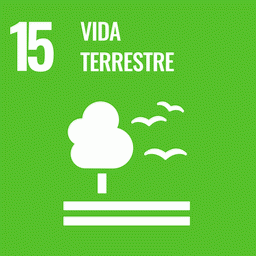Resprouting is an efficient life history strategy by which woody savanna species can recover their aboveground biomass after fire. However, resprouting dynamics after fire and the time it takes to start producing flowers and fruits are still poorly understood, especially for the Brazilian savanna (Cerrado biome), where fire is an important driver of vegetation structure and ecosystem functioning. We investigated the resprouting dynamics and production of flowers and fruits of 26 woody species (20 tree and 6 shrub species for a total of 485 individuals) that were burned and the production of flowers and fruits for a subset of 12 species (139 individuals) in an unburned area in a Brazilian savanna. We classified the species’ resprouting strategies as hypogeal (at the soil level, with main stem death), epigeal (on the main stem or crown), and hypogeal + epigeal. We used generalized linear mixed-effect models to identify the post-fire recovery patterns for five years. Individuals with basal resprouts (hypogeal and hypogeal + epigeal resprouting) produced an average of 6 basal resprouts, but only 33% of resprouts survived after five years. Individuals in burned areas produced fewer flowers and fruits than individuals in unburned areas. At least a subset of individuals in all the resprouting strategies started to produce flowers and fruits in the first-year post-fire. About 68% of the species with hypogeal resprouts produced flowers and fruits in the first-year post-fire, but the intensity of flowering and fruiting was lower compared to individuals with other resprouting strategies over time. Although woody species have invested in post-fire growth and sexual reproduction in all resprouting strategies, the long time needed to recover these processes can make these species more vulnerable to frequent fires.
Letícia Gomes, Eddie Lenza, Fabiane Furlaneto Souchie, José Roberto Rodrigues Pinto, Leonardo Maracahipes-Santos, Marco Túlio Furtado, Leandro Maracahipes, Divino Silvério
Baixar (sujeito à disponibilidade)
Download (subject to availability)

Este projeto está alinhado aos Objetivos de Desenvolvimento Sustentável (ODS).
Saiba mais em brasil.un.org/pt-br/sdgs.
Veja também
See also
Amazônia em Chamas 9 – O novo e alarmante patamar do desmatamento na Amazônia
Amazônia em Chamas 9 – O novo e alarmante patamar do desmatamento na Amazônia
Desmatamento anual de 2019 a 2021 foi 56,6% maior que entre 2016 e 2018 na Amazônia; terras públicas concentraram 51% do desmatamento no último triênio, 83% dessas de domínio federal.
Guia prático para análise do atendimento ao Código Florestal
Guia prático para análise do atendimento ao Código Florestal
Este documento tem por objetivo apoiar as equipes de compra de commodities agropecuárias e florestais brasileiras no processo de verificação do cumprimento do Código Florestal por fornecedores. São apresentadas as ferramentas disponíveis e em desenvolvimento para a cobrança e implementação do Código junto às cadeias.